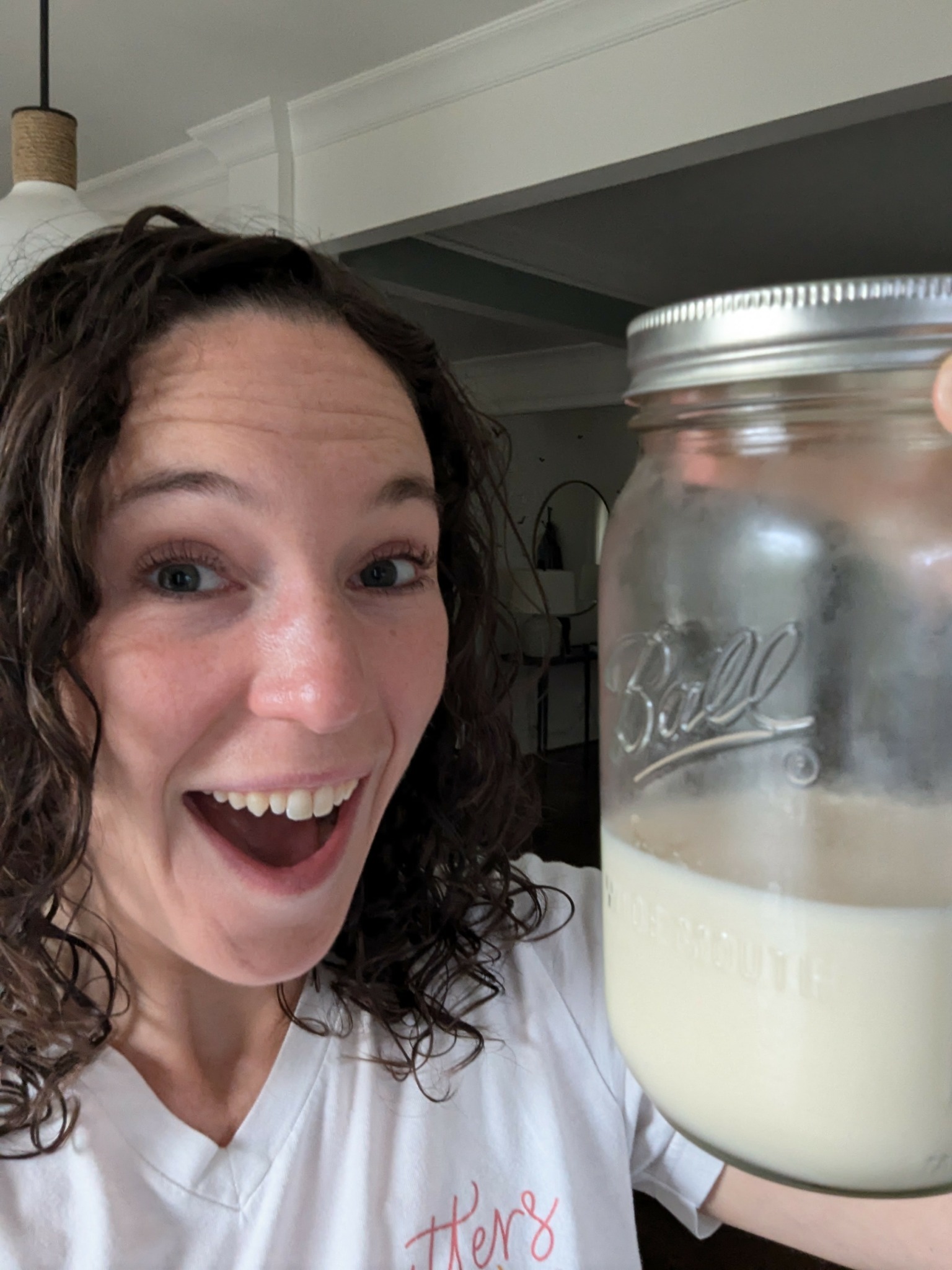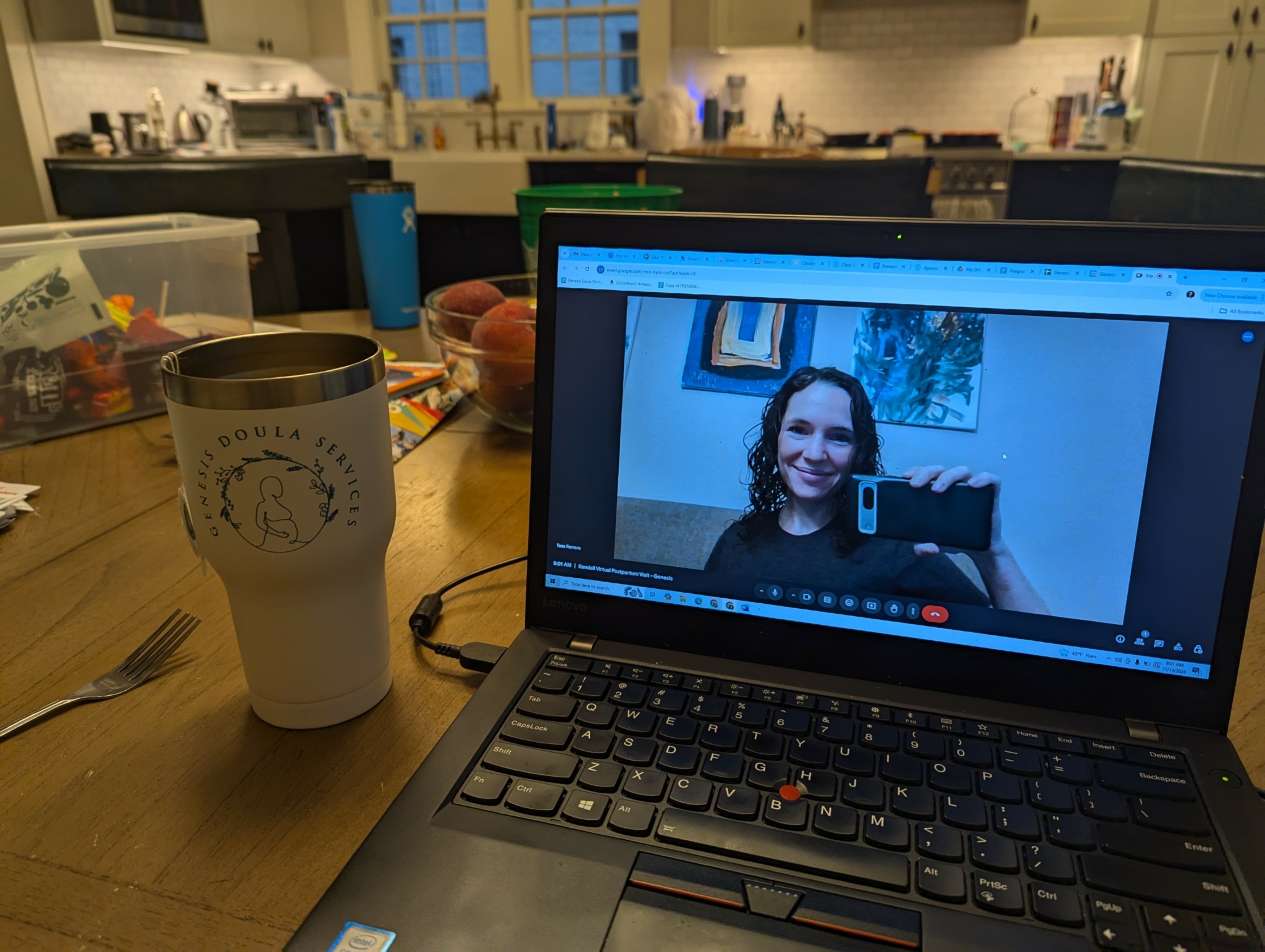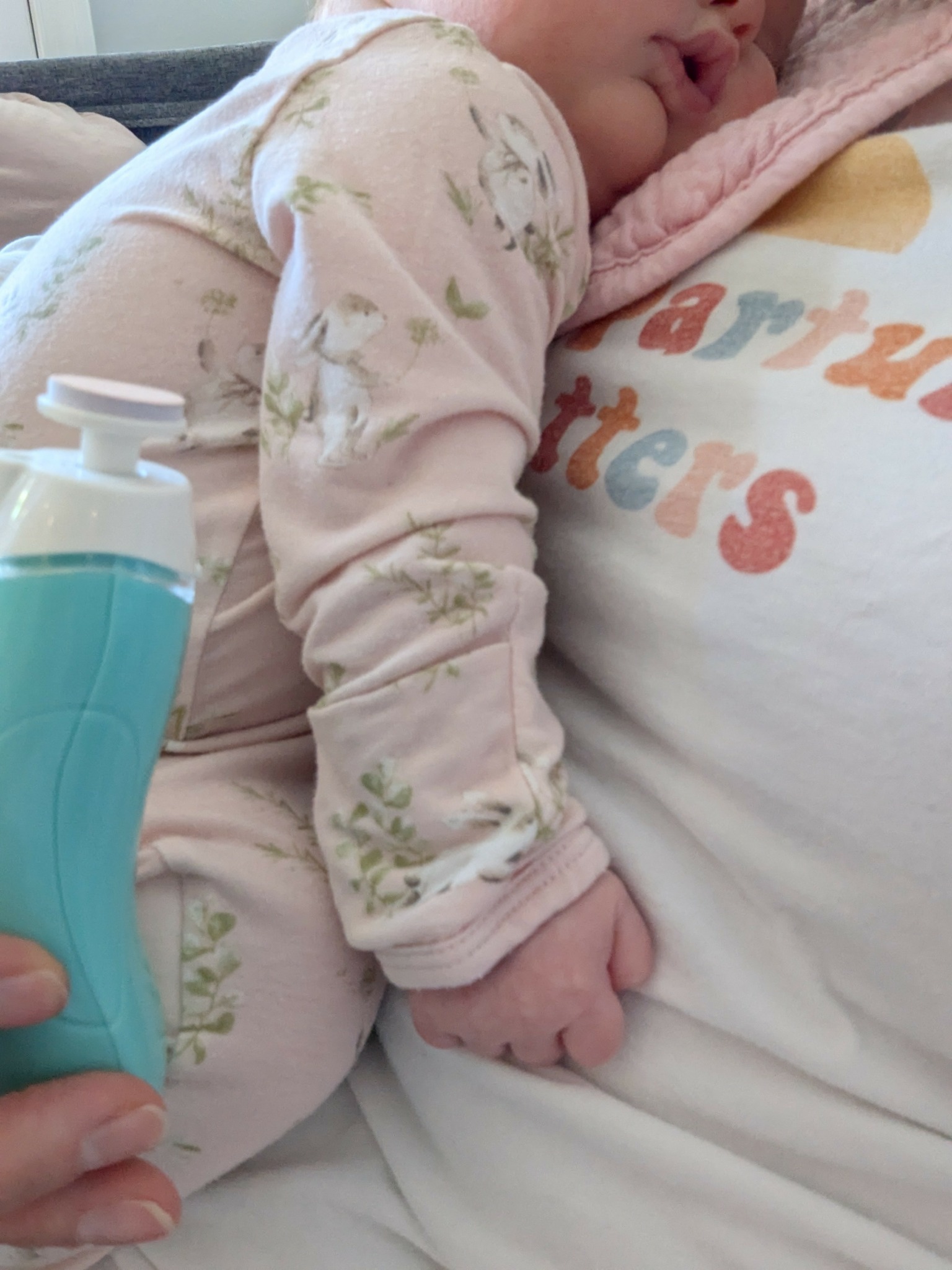We caught up with the brilliant and insightful Tess Ferrara a few weeks ago and have shared our conversation below.
Alright, Tess thanks for taking the time to share your stories and insights with us today. We love heartwarming stories – do you have a heartwarming story from your career to share?
I love getting texts in the morning that start with” just a heads up”… This morning I met with a sweet mama of a 6-week-old. He’s in the middle of a growth spurt and a Wonder Week and has been a bit off. His first month was shadowed by purple crying and Mama has been struggling with confidence in her bond and her ability to meet her baby’s needs. Whenever we have really difficult stretches, there’s a sense that we are failing our child and failing ourselves as moms. How can we not fix this? How can we not know what to do? Is this going to be forever? I’m supposed to love my baby but I hate every moment of his crying.
So this morning when I showed up mama started with sharing successes of the night and that he gave a few good stretches of sleep. Her husband is traveling for work though so she’s been so low for three straight days. Her mom and dad arrived yesterday so the note she sent me this morning was to give me a heads up about their personalities and how the morning might feel a little bit different. Mamas are so thoughtful in wanting to make sure everyone is comfortable in their home. After discussing the night time, she shared a new sound her son was making. During the night he woke up with a scream! A new scream that jarred her out of her sleep. She remarked that she didn’t know she could move that fast! After a quick snuggle and a little pad on the back, he was fast asleep again. She knew that he wasn’t hungry or waking up to feed but noticed he had wiggled an arm out of his swaddle and she thought he hit himself in the face. It’s hard to fall asleep after that kind of cortisol jump! So Mama was tired this morning and said she would like to take a nap this morning. She’s been pumping once or twice a day in order to have a bottle at the end of the day for Dad to feed him before sleep. So the refrigerator had milk and she could go to sleep. I got a quick lay of the land in the kitchen and told her that we would get the little buddy to sleep and take care of some of some of the other things in the kitchen. She sighed with a smile and, after checking in with her, parents went up to her room to sleep.
Sweet boy was definitely tired and giving all of the sleepy signs. So we moved into some sleep routines. Mom and dad shared with me last week that he prefers to be double swaddled even though he fights it at first. He gets his deepest sleep when he swaddled twice. So I got him all snugged and settled the Moro reflex and picked him up and bounced him. We bounced and swayed doing a walking wind down for about 10 minutes until he was softly asleep. I moved to transfer him into his bassinet where a sound machine was already turned on. After being laid down, he strongly disagreed so we had a few more snuggles. When those eyes started to fall again, I laid him back down slowly removing my hands and shushing and giving him one final touch on his belly so he knew he wasn’t alone.
Moving into the kitchen, the sink was full of dishes from the morning and the wash bin was full of pump parts and bottles from the evening and the previous day. The sanitizer had a clean run cycle in it so I got to work. I took a deep breath of gratitude that mama was prioritizing the rest she does so desperately needed. I was grateful to be able to lessen her load for when she woke up so that she could enjoy her baby and feel less overwhelmed by the other things she needed to do.
Baby boy started to stir and I checked the clock. It had been 20 minutes since he fell asleep, so I knew he was just moving between sleep cycles from light sleep to deep sleep. I let him wiggle and make a few sounds and he turned his head to the other side and fell back asleep. I took a look in the pantry and found the ingredients for some protein balls. Mama texted last night that she was considering a dairy-free diet in order to test out the impact on his purple crying. I knew these would be a one-handed dense nutrition snack to help her along the way. By the time I finished, he was right on cue at 45 minutes and started to stir. Babies definitely have their rhythms! But when I went over to him, his eyes were still closed and he looked frustrated as opposed to content and wide awake. I picked him up and resumed the walking wind down sway and bounce. I shushed rhythmically and my heartbeat and respiration matched his. The co-regulation of caretaker and baby will never cease to amaze me. Within 5 minutes he was back asleep. I gave him a few extra snuggles and laid him back down in his bassinet. We did this song and dance a few more times until finally he opened his eyes and continually looked around without a fuss. I knew then that we were awake and it had been 3 hours since his last feed so he knew what his body needed! I started to warm the milk and unswaddled him so he could begin his morning stretch. His tiny grunts and squeaks and squawks and full body stretches brought me a smile and I gently welcomed him back to awake time. The gentle calm quickly was replaced by a fervor for food. So we got all situated on the couch and began to have our bottle. Mama’s body woke her up at around the same time needing to pump so she came out of her room and said that she was a new woman!
This particular story and family have a special place in my heart. They were in such a challenging place full of so much love and confusion. It is an honor to walk with families through their most difficult transitions, sharing my knowledge, and being a calming source of care for everyone!


Great, appreciate you sharing that with us. Before we ask you to share more of your insights, can you take a moment to introduce yourself and how you got to where you are today to our readers.
As a postpartum doula, I mother mamas without the baggage of being their own moms. This is the “elevator speech” I was asked to coin in my training through DONA International. And in so many ways, this rings true! Motherhood is all encompassing and the single greatest change to the human body that we experience as a species. And yet, there is so little infrastructure in place to care for mothers, to walk with them, to help them navigate all the learning, to affirm the journey, to repair their bodies, to nourish their mind and body. Historically, women became mothers in community. The women of a village would come together and raise the baby and the mother in commune, they would norm the difficult, share the tricks, and learn together. As we have become more and more independent, the support systems have also dissipated. This is where a postpartum doula comes in.
As a doula, I come into a family’s home for the first 4 months of a new baby’s life (whether that baby was born via surrogate, adoption, Cesarean, vaginal) and ease the transition for several daytime hours as a time. Each visit will look different based on the family’s needs on that day. Generally speaking, though, there are a few facets of support: emotional, informational, and logistical. Emotional support is witnessing the difficult stages and affirming that the mother is not a bad mom for disliking this part. It is hearing how she is proud of herself but disappointed in others. It is affirming for her that she knows so much about her baby when she’s feeling unconfident. It is processing this journey with someone objective.
Informational support is the teaching side of my work. This is why I love daytime shifts – we have the opportunity to really learn about the baby and the family’s values. My job is not to make decisions for a family. Only the parents can know the family’s desires and they know their baby best. What I will do is help them shift through all of the noise and voices out there about parenting decisions and guide them into an answer based on what their immediate and long-term goals are. A classic example is the question of using a pacifier. When a parent asks me about giving baby a paci, I ask them what their goal is. Is the goal for baby to learn how to self-soothe and fall asleep on their own? Well, at this age of 6 weeks, baby’s brain isn’t developed enough to do that and they cannot put the pacifier back in on their own yet. Is the goal for baby to settle down to take a nap because you’re really exhausted and need a nap yourself? Then sure, let’s try it! There’s no orthodontic concerns at 6 weeks with pacifier use, and, in fact, the AAP identifies pacifier use with reduced SIDS. By 6 weeks, a successful breastfeeding relationship may been established so there’s no evidence about “nipple confusion” at this point. So then we try whatever decision they come with! There’s a lot of pressure to make the right decision right away, and one of the benefits of having a postpartum doula with you in the early weeks is that we help take the pressure off and encourage you to try things out with your baby as you get to know each other! With my extensive training on postpartum symptoms, newborn development, all methods of feeding, calming strategies, and postpartum nutrition, I am a source of evidence-based knowledge. No questions are off limits!


What’s a lesson you had to unlearn and what’s the backstory?
As an expert in newborns, postpartum, and perinatal nutrition, I have a lot of knowledge. I’ve worked hard to learn, relearn, and unlearn as the newest research comes out and new products are developed. What is unique about my approach, though, is that I do not just want to be the only source of konwledge for families. My goal is to help families gain confidence in their decision making, their parenting trajectory, and their recovery from delivery so that they can make decisions on their own with more confidence. I want to work myself out of the job!
Here is where it comes from…I used to be a high school English teacher. My teaching pedagogy was also unique in that I did not just give a study guide, test memorization, or give traditional reading assessments. What I was curious about is how students make sense of the material and how they supported their claims. In other words, I wanted to see their thinking. I wanted their thinking to be able to transcend just one text. I wanted them to be able to apply their thinking to multiple scenarios. This was uncomfortable to students who were used to an educational system that valued input = output.
When I came to the postpartum world, then, my approach was the same. Here is a prime example:
Parent (P): “Okay, so when the baby is eating his hand like that, should I give him a pacifier?”
Doula (D): “What is making you wonder about that?”
P: “Well, I don’t want him to scratch himself, but I know a lot of people don’t like pacis.”
D: “Certainly! What is your goal right in this moment…knowing that it might change later.”
P: “I don’t want him to scratch his face.”
D: “Have you filed his nails before? Would you like to practice this together?”
P: “I tried it last night, and I think I did a good job!”
D: “Congrats! That’s a huge deal! All babies will scratch themselves at some point because they grow so fast! Thankfully, they heal super quickly. Do you have other reasons/worries about pacifiers?”
P: “I mean, it would be great to have as an option if he’s getting upset, but is it safe?”
D: “Great question – this kind that you have is very safe. The AAP actually recommends pacifier use for the first 6 months as a SIDS reduction aid. And object permanence doesn’t come into play until after that, so you have a nice runway to try things out and make changes if it doesn’t feel good. How does that feel?”
P: “Okay, great, so I have some time to figure things out. I’ll just kind of see if he needs it, but maybe we’ll try it later.”
Here, I am giving a little knowledge to help a parent make their own decision instead of just saying yes or no. Unlearning the role of an expert in this postpartum space has been important and sets apart my doula approach!


Putting training and knowledge aside, what else do you think really matters in terms of succeeding in your field?
If it takes a village to raise a baby, it takes an even bigger village to raise a mama. Postpartum doulas have a critical networking role. Many new parents do not know what options exist and when to reach out for help. There is a lot that I can do to support families within their own homes, but there is also an important line when other professionals are needed to come into their village. I love making personal recommendations for families to pelvic floor physical therapists, lactation consultants, local mom groups/classes, and maternity focused therapists in particular. Being humble and knowing when to bring other professionals into the conversation is critical in my line of work, and making recommendations specific to that parent, their needs, and their personality is an honor. I meet with every person that I recommend in order to ensure the best fit – parents don’t have time to vet through 8 options. Helping them save time and getting the support and expertise they need is hugely important.
Contact Info:
- Website: https://www.genesisdoulaservices.com
- Instagram: @genesisdoulaservicesatl




